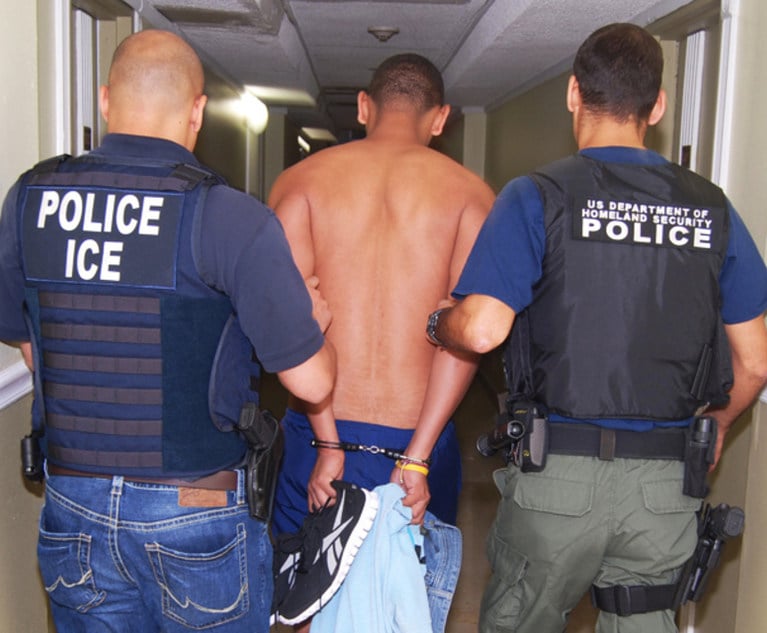EB-5 Regional Center Program Facing Changes
On Sept. 8, nearly a month ahead of the Sept. 30 deadline, the EB-5 Regional Center Program was extended to Dec. 8, as part of H.R.601. While the extension of the EB-5 Regional Center Program is a welcome development, yet another short-term extension of the EB-5 Regional Center Program leaves the EB-5 immigration community to wonder what changes may be brought by future legislation and how the requirements for participation in the EB-5 Regional Center Program will be updated and, presumably, augmented.
September 19, 2017 at 04:44 PM
6 minute read
On Sept. 8, nearly a month ahead of the Sept. 30 deadline, the EB-5 Regional Center Program was extended to Dec. 8, as part of H.R.601. While the extension of the EB-5 Regional Center Program is a welcome development, yet another short-term extension of the EB-5 Regional Center Program leaves the EB-5 immigration community to wonder what changes may be brought by future legislation and how the requirements for participation in the EB-5 Regional Center Program will be updated and, presumably, augmented.
Under the EB-5 visa category, immigrant investors who satisfy statutory and regulatory requirements are able to invest $1 million (or $500,000 in targeted employment area (TEA)) in a new commercial enterprise that will employ 10 full-time U.S. workers, allowing the immigrant investors to obtain conditional permanent residence for two years. Investors' conditional residence can be made permanent upon demonstration at the end of the two years that the investment proceeds have not been withdrawn and the requisite jobs have been created. The investor may decide to invest in his own business and create jobs directly through that business, or to invest in a “regional center.” Regional centers are government-approved entities in designated geographical areas which sponsor projects through pooled investments from several EB-5 investors, resulting in the creation of direct, indirect and induced jobs for U.S. workers.
Past pieces of draft legislation have included numerous proposals that would create significant changes to the EB-5 Regional Center Program. Based on past legislative efforts, these potential changes might include revisions to the definition of a TEA or changes to the criteria used to evaluate whether a location qualifies as a TEA; an increase in the amount that an immigrant investor would need to invest in a new commercial enterprise to be able to petition for conditional permanent residence; the creation of separate categories of reserved visas for areas of urban poverty and for those areas that are not considered TEAs; and significant increases in regional center compliance requirements, including various certifications verifying the investment opportunity's compliance with securities laws.
This content has been archived. It is available through our partners, LexisNexis® and Bloomberg Law.
To view this content, please continue to their sites.
Not a Lexis Subscriber?
Subscribe Now
Not a Bloomberg Law Subscriber?
Subscribe Now
NOT FOR REPRINT
© 2025 ALM Global, LLC, All Rights Reserved. Request academic re-use from www.copyright.com. All other uses, submit a request to [email protected]. For more information visit Asset & Logo Licensing.
You Might Like
View All
Lawyers' Phones Are Ringing: What Should Employers Do If ICE Raids Their Business?
6 minute read
The New Trump Worksite Enforcement Paradigm: Everything You Need to Know
14 minute read
EB-5 Rebounds After a Rocky Year: Challenges of 2024 Lay Groundwork for a Booming 2025

Navigating the Business Immigration in a Second Trump Administration
Trending Stories
Who Got The Work
J. Brugh Lower of Gibbons has entered an appearance for industrial equipment supplier Devco Corporation in a pending trademark infringement lawsuit. The suit, accusing the defendant of selling knock-off Graco products, was filed Dec. 18 in New Jersey District Court by Rivkin Radler on behalf of Graco Inc. and Graco Minnesota. The case, assigned to U.S. District Judge Zahid N. Quraishi, is 3:24-cv-11294, Graco Inc. et al v. Devco Corporation.
Who Got The Work
Rebecca Maller-Stein and Kent A. Yalowitz of Arnold & Porter Kaye Scholer have entered their appearances for Hanaco Venture Capital and its executives, Lior Prosor and David Frankel, in a pending securities lawsuit. The action, filed on Dec. 24 in New York Southern District Court by Zell, Aron & Co. on behalf of Goldeneye Advisors, accuses the defendants of negligently and fraudulently managing the plaintiff's $1 million investment. The case, assigned to U.S. District Judge Vernon S. Broderick, is 1:24-cv-09918, Goldeneye Advisors, LLC v. Hanaco Venture Capital, Ltd. et al.
Who Got The Work
Attorneys from A&O Shearman has stepped in as defense counsel for Toronto-Dominion Bank and other defendants in a pending securities class action. The suit, filed Dec. 11 in New York Southern District Court by Bleichmar Fonti & Auld, accuses the defendants of concealing the bank's 'pervasive' deficiencies in regards to its compliance with the Bank Secrecy Act and the quality of its anti-money laundering controls. The case, assigned to U.S. District Judge Arun Subramanian, is 1:24-cv-09445, Gonzalez v. The Toronto-Dominion Bank et al.
Who Got The Work
Crown Castle International, a Pennsylvania company providing shared communications infrastructure, has turned to Luke D. Wolf of Gordon Rees Scully Mansukhani to fend off a pending breach-of-contract lawsuit. The court action, filed Nov. 25 in Michigan Eastern District Court by Hooper Hathaway PC on behalf of The Town Residences LLC, accuses Crown Castle of failing to transfer approximately $30,000 in utility payments from T-Mobile in breach of a roof-top lease and assignment agreement. The case, assigned to U.S. District Judge Susan K. Declercq, is 2:24-cv-13131, The Town Residences LLC v. T-Mobile US, Inc. et al.
Who Got The Work
Wilfred P. Coronato and Daniel M. Schwartz of McCarter & English have stepped in as defense counsel to Electrolux Home Products Inc. in a pending product liability lawsuit. The court action, filed Nov. 26 in New York Eastern District Court by Poulos Lopiccolo PC and Nagel Rice LLP on behalf of David Stern, alleges that the defendant's refrigerators’ drawers and shelving repeatedly break and fall apart within months after purchase. The case, assigned to U.S. District Judge Joan M. Azrack, is 2:24-cv-08204, Stern v. Electrolux Home Products, Inc.
Featured Firms
Law Offices of Gary Martin Hays & Associates, P.C.
(470) 294-1674
Law Offices of Mark E. Salomone
(857) 444-6468
Smith & Hassler
(713) 739-1250





